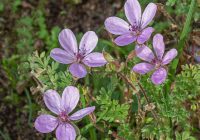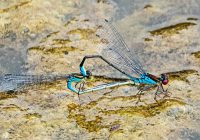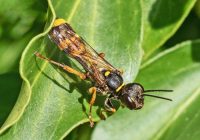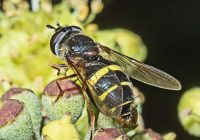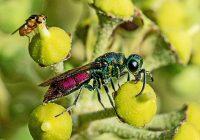Dr Phil Smith’s Wildlife Notes
September 2020
September can often be wet but this one was unusually dry, rain falling on only eight days. Although it wasn’t particularly warm, above average sunshine produced what has long been known as an “Indian Summer.”
Autumn came early, leaf-fall on the Black Poplars at Ravenmeols being almost complete by mid-month, the amber, upsweeping, bare shoots contrasting with the lichen-covered older branches. Sadly, most of our sand-dune flowers also disappeared earlier than usual, one of few to hang on being the hybrid between the Common and Sticky Stork’s–bill. A speciality of the Sefton Coast, this attractive plant is a national rarity, being known only from Merseyside and north Wales. Despite this, it is widespread and common on the Sefton dunes; I found spectacular patches in Rabbit-grazed turf near the coast road at Falklands Way, Ainsdale. At least the hybrid willows keep their leaves well into the autumn, allowing me to continue a long-term study into Salix ×friesiana, a cross between Creeping Willow and Osier. This rare plant is known from only a dozen British localities but can be found all along the Sefton Coast, with about 500 bushes in my database.
Keen to catch up with some of the wildlife we missed during this Covid year, Trevor Davenport and I donned our masks and took the train to St Michaels on 1st. A five-minute walk brought us to the former Festival Gardens site where Small Red–eyed Damselflies entertained us last year. Building cloud threatened to deprive us of our quest but the sun shone briefly, enabling us to find several Small Red–eyes on the main pool. I had to wade out into the shallow water to get close enough for photos. Exploring the margins of a second pond revealed two enormous Hornet Hoverflies, the largest of their kind, together with a Lesser Hornet Hoverfly nectaring on Water Mint. Larger dragonflies there included several Brown Hawkers with their ginger wings. I hear that Small Red–eyes also turned up at Longton Brickcroft near Preston, so they are continuing their journey north, having first appeared in Essex in 1999.
My frequent trips to the Devil’s Hole to record willows led to the unexpected discovery on 5th of two enormous hawkmoth caterpillars on the same bush. I photographed both of them, the first being an Eyed Hawkmoth with its distinctive bluish tail-horn. I assumed the other was also this species but a careful look at the photos revealed, to my surprise, that it was the closely related Poplar Hawkmoth.
The following day, the caterpillars were still there and Trevor and I counted seven Northern Dune Tiger Beetles on bare sand around the Devil’s Hole. Trevor also spotted a Lesser Hornet Hoverfly on Ragwort, while five Migrant Hawkers were cruising majestically along the nearby sheltered woodland edge.
On 9th, a first visit this year to a friend’s enormous garden pond at Hillside was too late for most dragonflies but we counted 14 Common Darters and, as we were about to leave, a rather battered male Southern Hawker turned up, perching conveniently on some garden furniture.
Patches of flowering Ivy on the sheltered south-facing edge of the Ravenmeols woodland are a must for insects in September, several visits during the month being well rewarded. Butterflies there included the usual Red Admirals but a peak count of 40 was exceptional. They were accompanied by up to 10 Commas, while several black-and-yellow Field Digger Wasps were running about on Ivy stems, trying to catch small flies to stock their nest chambers. Now regular in our area, Ivy Bees, were busily collecting nectar and pollen. Other highlights were a superb Ruby-tailed Cuckoo-wasp with impossibly bright metallic colours and the rare bristly fly Linnaemya picta, which I had recorded nearby in July – the first for the Northwest.
Ivy at the top of Range Lane and at Wicks Path, Formby Point was also productive. The former provided more Ivy Bees, while the latter was graced by a Yellow-girdled Dasysyrphus, a beautiful black-and-gold hoverfly that I have only seen once before. I also photographed an insect I didn’t recognise. It took a while to work out that it was a species of soldier-fly, the Twin–spot Centurion. Although the books say it is quite widespread, it was new to me.
After regular mouth-watering reports from Pete Kinsella, I just had to visit Crosby Coastal Park. Here, Ivy Bees were much more numerous than at Formby and I found two spectacular Hornet Hoverflies, which were certainly worth the trip.
From mid-month, the wild calls of Pink-footed Geese overhead reminded me of the importance of our area for ducks, geese and waders. Pinkfeet are such a familiar sight and sound in and around Formby that it is easy to forget that up to 10% of the world population winters in Lancashire and north Merseyside. I need to dust off my telescope again.

